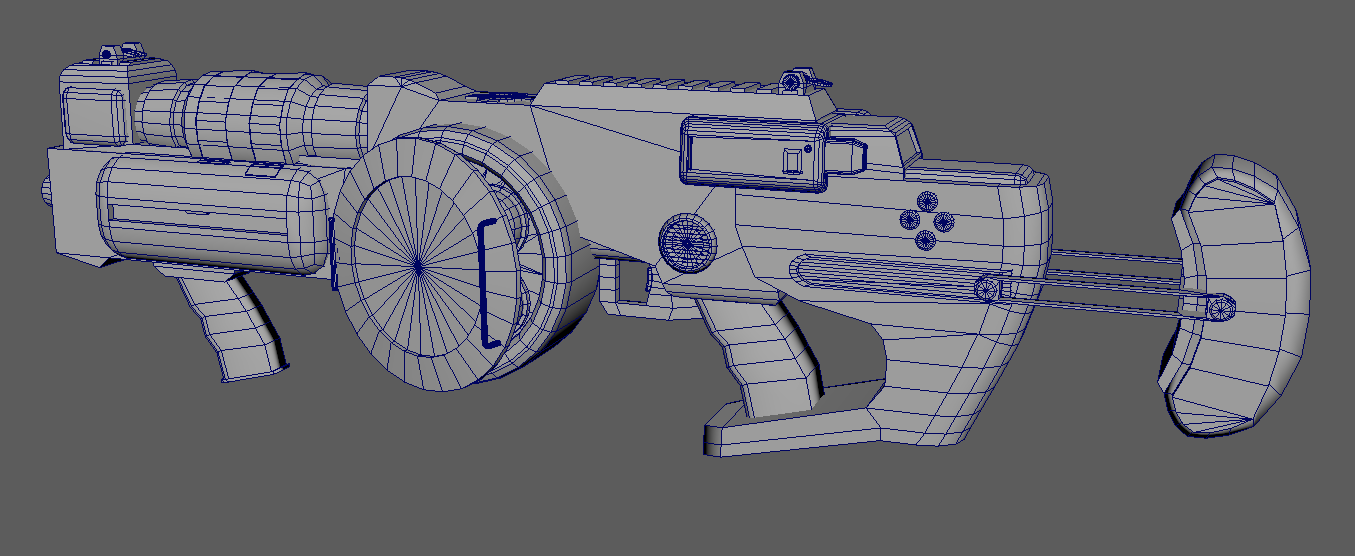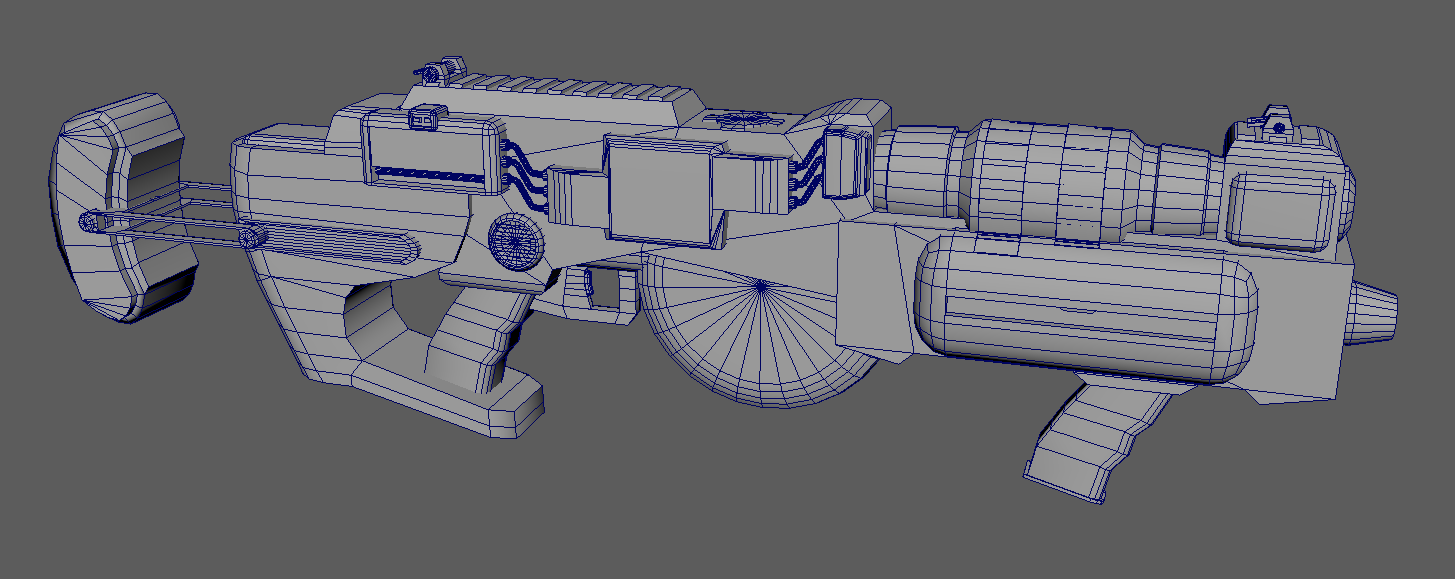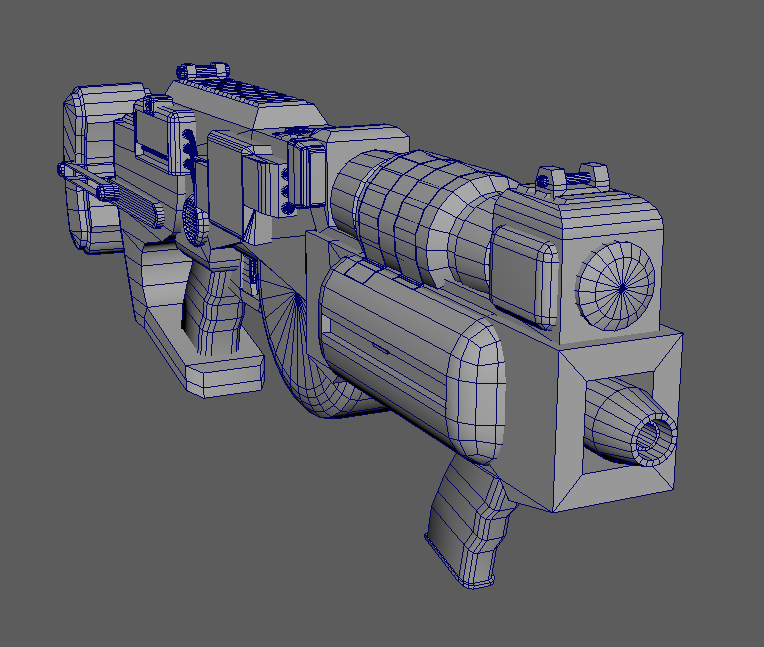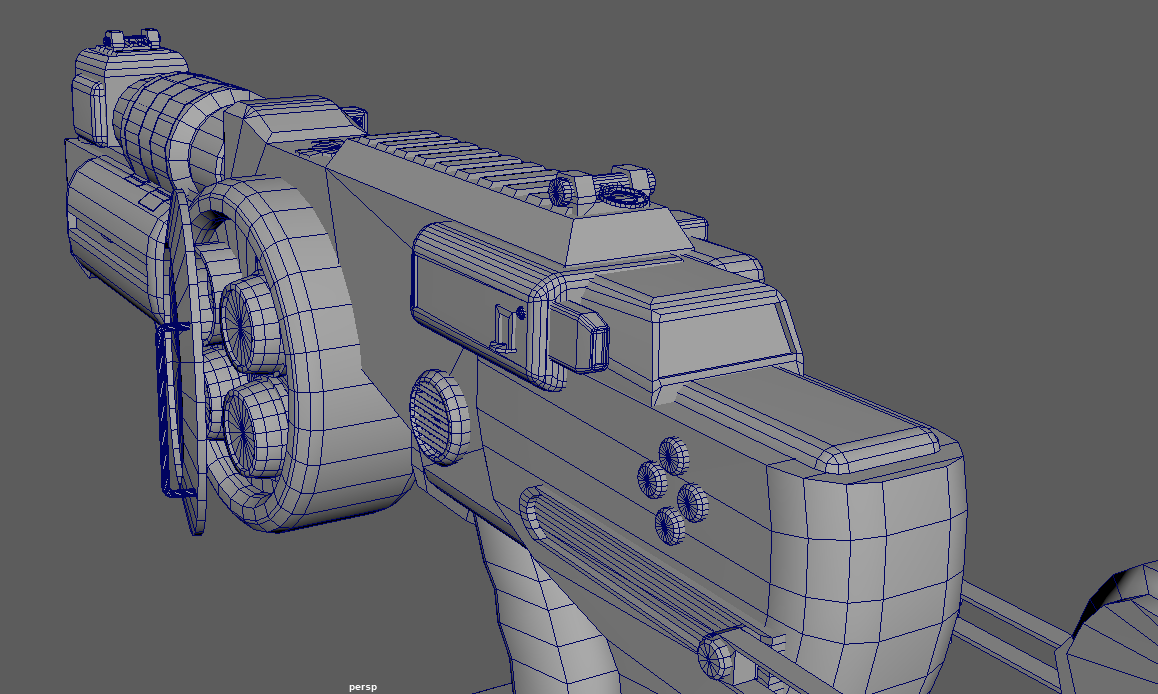The BRAWL² Tournament Challenge has been announced!
It starts May 12, and ends Oct 17. Let's see what you got!
https://polycount.com/discussion/237047/the-brawl²-tournament
It starts May 12, and ends Oct 17. Let's see what you got!
https://polycount.com/discussion/237047/the-brawl²-tournament
Weapon Prop Modeling: Continuous VS. Pipeshoving??
Hi all,
I'm in the process of modeling my first weapon, a custom gun that exists within the Fallout universe. I also noticed that guns can be continuously modeled, meaning most if not all of the body of the gun can be one mesh. I'm confused by this because that adds several extra polygons in places where parts could easily be pipeshoved.
While this is not going to be part of a larger environment and just a marmoset showcase, does it make a huge difference if key parts of the gun are pipeshoved instead of continuously modeled?
I've also read this may cause baking issues where the assets are pipeshoved, but that also confuses me.
Below are images of the WIP gun for reference.
Thanks in advance!




I'm in the process of modeling my first weapon, a custom gun that exists within the Fallout universe. I also noticed that guns can be continuously modeled, meaning most if not all of the body of the gun can be one mesh. I'm confused by this because that adds several extra polygons in places where parts could easily be pipeshoved.
While this is not going to be part of a larger environment and just a marmoset showcase, does it make a huge difference if key parts of the gun are pipeshoved instead of continuously modeled?
I've also read this may cause baking issues where the assets are pipeshoved, but that also confuses me.
Below are images of the WIP gun for reference.
Thanks in advance!




Replies
Shoving bits of geo into others can waste texture space and add a slight cost to rendering if you don't trim them off neatly but equally if you insist on making everything watertight you can end up using crap loads more geometry than you need to.
You have to balance the cost and arseache against the quality. I definitely wouldn't merge a bolt head into a mesh but if something would be part of the same surface in real life then I would.
Use your judgement and if called up on it during an interview, explain your reasons - what I usually look for is a thought process rather than a correct answer.
As mentioned, too many intersecting meshes can waste a lot of UV space as well. Typically this means that for a comparable asset, the one which has too many intersections will have worse texture resolution. In your screenshot you've got some areas where you probably have 40% wasted UV space between the intersections. Generally speaking, video memory is much more precious than geometry drawing speed, and textures take up more VRAM than polygons, so wasted UV space should be avoided.
Personally, I try to merge elements unless:
This is a fairly old asset, but you can see the general principal here. The main body of the gun is one wateright mesh, with only the accessories and animating areas being separate elements.
The main thing I would do differently these days is that more of the details would be modeled out rather than represented in the normal map. Like the safety selector switch for instance.
Another general tip: note how that areas closest to the camera, like the iron sights, have extra detail, and the areas behind the camera, like the buttstock, have minimal detail.